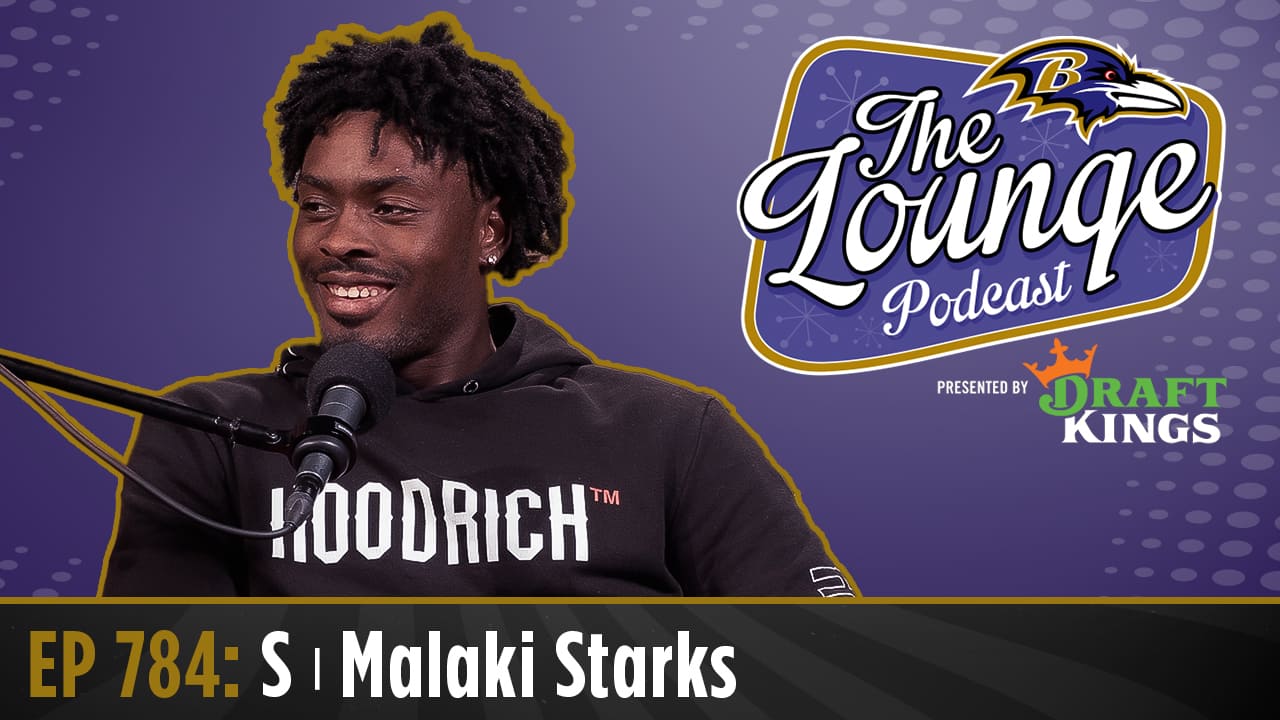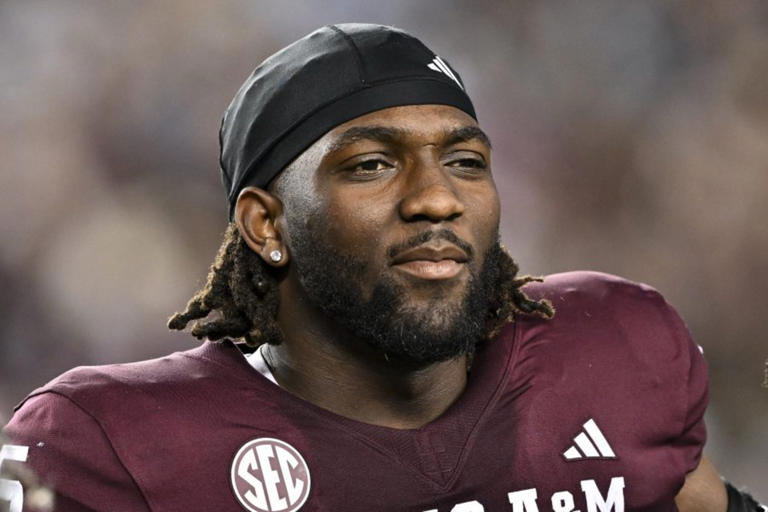Ravens Rookie Malaki Starks Breaks It All Down: What He Just Told Ryan Mink and Garrett Downing About Surviving Camp, Earning Trust, and Changing Baltimore’s Defense
Malaki Starks didn’t stroll into Baltimore as just another talented first-round draft pick; he arrived carrying the weight of expectation, the edge of a competitor who thrives on challenge, and the curiosity of a fan base that lives for defense done the Ravens way. That’s what made his sit-down with team insiders Ryan Mink and Garrett Downing so compelling. What might have been a routine camp preview turned into an unexpectedly revealing conversation about mindset, role, accountability, and what it really means to join a locker room where defensive excellence is culture, not aspiration. Starks spoke with a grounded intensity that pulled listeners in, careful with clichés but generous with substance. He didn’t promise greatness. He promised work, and in a place like Baltimore, that lands louder than hype.
From the moment Mink teed up the first question—how the jump from college to the NFL has hit him so far—Starks leaned into detail. He talked about speed, yes, but not just speed of play; speed of adjustment, speed of mental reset after a missed rep, speed of recovering eye discipline after motion. In college, he said, he could occasionally win on pure athleticism when alignment or recognition lagged. In the NFL, he’s learning that late equals beaten, and beaten equals points. He described walkthroughs that feel like midseason chess matches, with quarterbacks baiting safeties to cheat leverage and coordinators layering motions to test communication. He didn’t sound overwhelmed. He sounded energized by the problem to solve.
Garrett Downing pressed him on communication—always a big talking point when a young safety lands in a complex system. Starks lit up talking about the veterans already shaping him. He singled out how quickly guys in the room expect clarity: call it, echo it, own it. No mumbling through the motion shift, no “I thought.” In film, he said, the standard in Baltimore is that if a bust happens and you were part of the communication chain, you explain the why. That accountability is uncomfortable to some young players; he welcomes it because it eliminates gray area. The faster he becomes a reliable voice, the faster he’ll be trusted to quarterback coverage shells, spin late, bait throws, and trigger downhill without creating voids behind him.
Mink then nudged at scheme fit. Ravens fans love versatility on the back end—bracket looks, disguise, spin, simulated pressure. Starks didn’t give away playbook secrets, but he gave just enough to stir imagination. He said the staff loves that he played multiple coverage techniques in college: quarters match, robber looks, man from depth, and boundary rotation. In camp installs, he’s being cross-trained so he’s never stuck as “just” a high safety or “just” a nickel support piece. The goal, he said, is to be unpredictable in pre-snap structure but disciplined in post-snap rules. That duality—show chaos, deliver structure—defines great Ravens defenses. He wants in on that identity immediately, not two years from now.
Downing asked a question that cut to something human: what’s been hardest that fans don’t see? Starks didn’t hesitate—time management and emotional economy. Rookie life means new city, new playbook, new financial reality, new expectations, and the constant drip of advice from everyone who ever coached you, grew up with you, or once saw you take batting practice in third grade. He laughed at that but made a larger point: learning when to turn the phone off, when to breathe, when to say no, is part of performing. The older guys told him: protect your recovery like you protect deep middle. If you’re gassed, you’re slow; if you’re slow, you’re wrong; if you’re wrong, you’re gone. Professionalism is energy stewardship.
The conversation turned to physical preparation for camp. Starks said he didn’t try to add bulk for the sake of numbers. The staff gave him movement benchmarks—hip flip efficiency, single-leg stability under load, strike force that carries through pads without sacrificing redirect. He worked with trainers on decel mechanics so he can plant, redirect, and close passing windows without putting stress on soft tissue. He joked that he’s done more band work in three months than in his whole life, but the payoff is felt in cleaner transitions out of pedal and fewer false steps on play-action. Mink pointed out that Ravens safeties have historically needed to be both tacklers and coverage erasers; Starks nodded, saying “if I’m in the right spot, hits come clean; if I’m late, I’m dragging.”
Fans always want to know when a first-rounder will “start.” Mink framed it politely; Downing pushed: are you expecting to be out there Week 1 taking regular snaps? Starks walked the tightrope like a pro. He said he competes to play, not to watch, but he respects that reps are earned, not awarded. He expects to contribute on special teams immediately and carve out packages on defense as the staff sees fit. He emphasized that special teams reps matter in Baltimore—field position fuels defensive swagger. Blocking, covering, or even serving as the safety valve on returns is part of earning respect. That answer—team-first, but competitive—felt authentic, not rehearsed.
One of the most revealing stretches came when Downing asked about studying the Ravens’ defensive history. Starks said he dove into archival tape: Ed Reed’s bait-and-jump angles, Eric Weddle’s communication and disguise work, and the modern rotation packages the coaching staff has evolved over recent seasons. He’s fascinated by how Reed used non-threatening body language to lull quarterbacks while secretly creeping into throwing lanes, and how that style only worked because the underneath defenders trusted timing. He knows fans will toss the Reed comparison around casually because of the jersey color and ball-hawking reputation, but he stressed that his job isn’t to imitate; it’s to apply lessons about vision, leverage, and timing within today’s scheme.
Mink circled back to rookie camaraderie—who Starks is leaning on day-to-day. He mentioned fellow draft classmates grinding through installs together, late-night quiz sessions in the hotel, and a friendly internal race to see who messes up the fewest alignments in walkthrough. Competition, he said, is quieter off-camera but relentless. Miss a check? You’ll hear about it. Nail a tough motion adjust? You get a nod. That micro-feedback loop builds trust faster than any team-building retreat.
Training camp always tests mental durability once pads come on and bodies get sore. Starks described setting “mini-wins” for each practice: perfect landmark in middle-third rotations, no busts in trips checks, two-plus decisive trigger reads in run fits, finish every rep with ball search. Stacking small goals keeps the grind from swallowing the bigger picture. He also journals after practice—what he saw, what he hesitated on, what cadence tricks quarterbacks used. Writing cements lessons he can revisit in Week 12 when fatigue and scheme volume spike.
Downing asked a fan-submitted question about handling mistakes in front of veteran stars. Starks said the standard response in Baltimore isn’t to hide; it’s to speak up in the room and own the rep. Veterans respect quick correction more than perfection. Blow a coverage, correct the footwork, explain the read trigger, move on. That psychological reset matters because the next snap might be live in front of 70,000 people. Fear of error slows play; embracing correction speeds it up. He’s choosing the latter.
Another layer emerged when Mink asked about Baltimore itself—city, fans, culture. Starks said he explored neighborhoods, met community outreach staff, and wants to plug into youth football clinics as soon as workload allows. He grew up believing athletes owe visibility to the next wave, and he remembers the pros who shook his hand when he was a kid. He wants kids in Baltimore to see him not as a billboard but as someone who shows up. That kind of community engagement carries weight with Ravens fans, who bond fiercely with players who invest back.
Toward the close, Downing framed camp as the bridge between draft promise and actual NFL identity. Who does Malaki Starks want to be when the regular season kicks off? His answer was measured: trusted communicator, reliable tackler, ascending playmaker. Trust first, splash later. If he earns freedom within the defense, the takeaways will come. He knows the city loves turnovers; he loves them too. But the path to them runs through discipline. Out-of-structure hero ball gets you beat. Within-structure instincts change games. That philosophy—patient aggression—felt exactly aligned with how Baltimore has rebuilt its defensive backbone in recent years.
As the interview wrapped, Mink and Downing thanked him, and Starks flipped the script, shouting out the equipment staff, rookie mentors, and film assistants who’ve guided his crash course. That detail mattered. Rookies who see the ecosystem early tend to integrate faster. He sees it.
So what should Ravens fans take from this conversation as training camp looms? First, the moment isn’t too big for Malaki Starks. He’s not chasing headlines; he’s chasing trust. Second, his skill set—range, physicality, disguise potential—fits Baltimore’s appetite for multiplicity on the back end. Third, he understands that special teams, communication, and recovery habits are the currency that buys snaps in September. Fourth, he’s studying the lineage while building his own lane. And finally, he gets Baltimore. Not just the stadium noise, but the blue-collar edge, the defensive pride, the expectation that if you wear the shield you hit, you communicate, and you finish.
Training camp will test all of it. Missed fits, humid days, stacked installs, live reps against shifting formations—these will shape how quickly Starks’ talent becomes trust. But if the tone he set with Ryan Mink and Garrett Downing is any indication, Ravens fans have every reason to lean in. The rookie sounds ready to learn loudly, hit cleanly, and grow into a role that could, in time, help define the next era of Baltimore defense. And in a city that still measures seasons by the thump of pads and the roar after a takeaway, that’s the kind of outlook that turns a first-round pick into a fan favorite.


